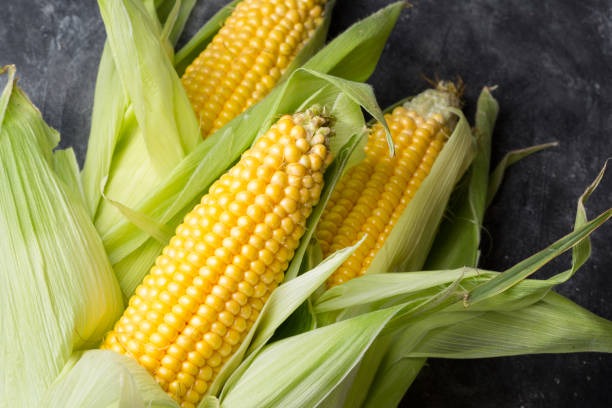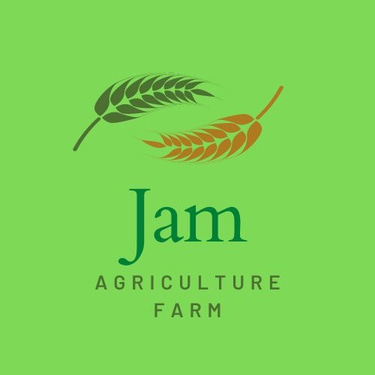Maize 🌽 Farming
Maize Farming Maize is generally known as “corn” and is one of the cash crops in Pakistan. Maize is used collectively in form of foodstuff or fodder.
AGRICULTURE
Maize Farming
Maize is generally known as “corn” and is one of the cash crops in Pakistan. Maize being the highest-yielding cereal crop in the world has significant importance for countries like Pakistan, where the fast-increasing population has already surpassed available food supplies. Maize is the third most important cereal after wheat and rice in Pakistan. Maize accounts for 5% of the total cropped area and 3.5% of the value of agricultural output. It is planted on an estimated area of 2 million acres with an annual production of 1.5 million tones. Maize is used collectively in form of foodstuff or fodder. Globally, maize is acknowledged as the queen of cereals because it has the highest yield potential among cereals.
Grains provide food items which are consumed in the form of starch, cornflakes and also as glucose. It is also used as animal feed in poultry. Maize can be cultivated in any soil as they require less fertile soil. Moreover, it fetches less ripening span of about 3 months as compared to paddy, which takes 145 days. By growing maize, farmers can easily protect the deteriorating condition of the soil, preserve 90% of water and 70% of strength as compared with paddy and can make more profit than wheat and paddy. It serves as basic raw material to thousands of industrial products like oil, starch and alcoholic beverages pharmaceutical, food sweeteners, food cereals, cosmetics, textile, film, package and paper industries.
Health Benefits
The health benefits of Maize are:
Good for digestion Due to its fibre content,
Helps in lowering LDL Cholesterol,
Prevents diabetics and hypertension,
Has anti-cancer properties,
Improves vision,
Beneficial for the heart,
Prevents Alzheimer’s disease,
Prevents skin problems and Hair loss.
Soil
Fertile well-drained muddy or simply red loams free of coarse elements and full of nitrogen are ideal soils for maize cultivation. Maize can be grown on wide-ranging soils including loamy sand to clay loam. Definitely depleted plains are effectively used for cultivation, even though it grows up in various hilly zones equally. Soils with fine organic matter containing good water holding capacity with pH ranging from 5.5-7.5 are required for high yield. Heavy clay soil is not suitable for cultivation. A Soil test is necessary to know the insufficiency of any nutrient in the soil.
Land Preparation
For cultivation, selected land should be free from weeds and the remains of the previously grown crop. Plough the land to bring the soil to a fine tilth. It may take 6 to 7 plough. Apply 4-6 tons/acre of well-decomposed cow dung across the field, also apply 10 Azospirillum packets in the field. Prepare furrows and ridges with 45 cm to 50 cm spacing.
Varieties
Gohar-19, Cimmyt-Pak, Pop-1, Sahiwal Gol, Malka, MMRI-Yellow, Agaiti-2002, Sahiwal-2002, Agaiti-85, Golden, Sultan, Sadaf, Akbar, Agaiti-72, Neelam, YH-1898, FH-949, FH-1046, FH-1036
Time of sowing: For the Kharif season, the crop is sown from the month of May end to June matching the beginning of the monsoon.
Spring crop is sown from late February to the end of March. Plantation of baby corn can be done all year round, except in December and January.
Kharif and rabi seasons are best for sweet corn sowing.
Spacing: To obtain higher yield along with resource-use efficiency, optimum plant spacing is the key factor.
For Kharif maize: use a spacing of 60x20 cm.
For Sweet corn: use 60x20 cm spacing.
Baby corn: Use 60x20 cm or 60x15 cm spacing.
Popcorn: Use 50x15 cm spacing.
Fodder: use spacing of 30x10 cm spacing
Sowing Depth: The seed should be sown at depth of 3-4 cm. For sweet corn, keep the depth of sowing to 2.5 cm.
Method of sowing
Sowing can be done manually by dibbling seeds or mechanically with help of a tractor-drawn ridge seed drill.
Seed Rate
For Kharif maize: use a seed rate of 8-10 kg/acre,
Sweet corn: use a seed rate of 8 kg/acre
Baby corn: 16 kg/acre seed rate.
Popcorn: 7 kg/acre seed rate.
Fodder: 20 kg/acre seed rate.
Intercropping: Peas can be taken as intercrop in maize plants. For that, take one row of peas between maize crops. In autumn sugarcane and maize plants also be intercropped. Sow one row of maize plants after two rows of sugarcane.
Seed Treatment
Seed treatment is necessary to protect seeds from soil-borne diseases and insect pests. To protect seeds from downy mildew, treat the seed with Carbendazim or Thiram@2gm/kg of seeds. After chemical treatment, treat the seed with Azospirillum@600gm+ rice gruel. After treatment shade dry seeds for 15-20 minutes. Azosprillum helps in fixing atmospheric nitrogen in the soil. Or use any one fungicide from below Fungicide name Quantity (Dosage per Kg seed) Imidacloprid 70WS 5ml Captan 2.5gm Carbendazim + Captan (1:1) 2gm
Fertilizer (kg/acre)
UREA DAP or SSP MURIATE OF POTASH ZINC
75-110 27-55 75-150 15-20 8
Apply Super phosphate@75-150 kg, 75-110 kg of Urea and 15-20 kg of Potash (apply only if soil shows its deficiency) per acre maize crop. Apply the whole amount of SSP and MOP and one-third of Urea at the time of sowing.
Apply the remaining dose of nitrogen at the knee height stage and pre-tasselling stage. Zinc and magnesium deficiency is common in maize crop. To overcome this deficiency, apply Znso4@8kg/acre as a basal dose. Along with zinc and magnesium deficiency, iron deficiency is also observed. Due to this whole plant gives a yellow appearance. To overcome this deficiency, apply a micro-nutrient mixture@25/acre mixed with 25 kg of sand after sowing the maize seed.
Weed Control
Weeds are a serious problem in maize, particularly during kharif/monsoon season they compete with maize for nutrient and causes yield loss of up to 35%. Therefore, timely weed management is needed for achieving a higher yield. Take one or two hand weeding in maize crop. First 20-25 days after sowing and the second when 40-45 days after sowing.
If weed infestation is high, spray with Atrazine @500gm per 200 Ltr of water. After weeding, apply fertilizer as a top dressing and carry out an earthing-up operation.
Irrigation
Maize is a very efficient water user. It needs large quantities of irrigation water for high yield because drought conditions lead to lower yields and lower quality grains. Maize requires 6-8 irrigations. First irrigation 3-4 weeks after sowing, remaining may be given at 10-15 days intervals. The grain formation is a critical growth stage. Maize is a very efficient water user. Apply irrigation immediately after sowing. Based upon soil type, on the third or fourth day give life-saving irrigation. In the rainy season, if rain is satisfactory then it is not needed.
Avoid water stagnation in the early phase of crop and provide a good drainage facility. Crop required less irrigation during the early stage, 20 to 30 days after sowing afterwards it required irrigation once a week. Seedling, knee height stage, flowering and grain formation are the most sensitive stages for irrigation. Water stress at this stage causes a huge loss in yield. In case of water scarcity, irrigate alternate furrow. It will save water also.
Harvesting
Harvesting should be done when the crop outer cover of the cob turns green to yellow/white. Harvesting is done by hand. Machines are used to separate the seeds from the cob.
Yield
When the quality seed is used for cultivation along with good field management, the yield is up to 32 mnds per acre.


